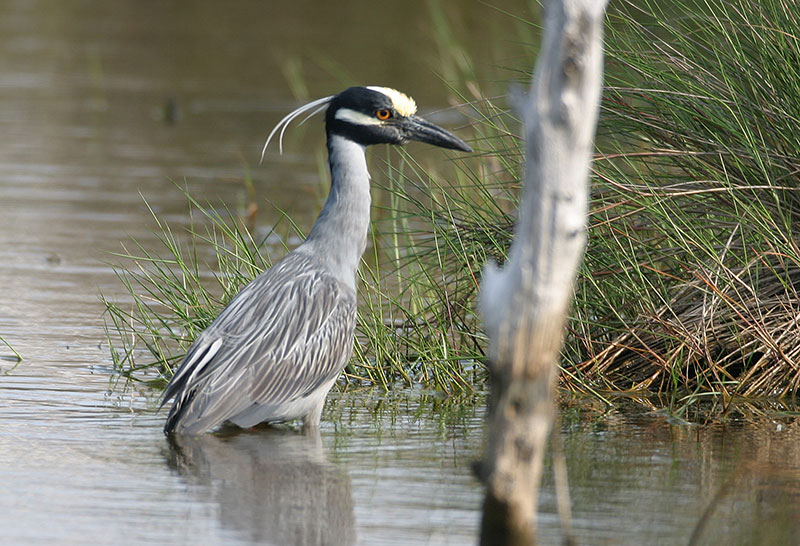The Yellow-crowned Night Heron is a fair-sized, gray heron with a thick beak and a black and white head.
If you are on the eastern coast or near a swamp and see a stocky heron squawking and flying around at dusk, it could be this species. Watch for Yellow-crowned Night Herons as they quietly perch or stand in water in swamps and coastal vegetation.
On this page
Identification
The Yellow-crowned Night Heron is a fair-sized, stocky heron with a thick black beak. Although males are a little bit bigger, both male and female Yellow-crowned NightHerons look very similar and have slate-gray plumage with dark streaks on their backs and closed wings.
On average, individuals of this species are around two feet long, have a three-and-a-half-foot wingspan, and weigh 1.5 pounds. The most prominent feature of the adult Yellow-crowned Night Heron is its bold, black-and-white head.
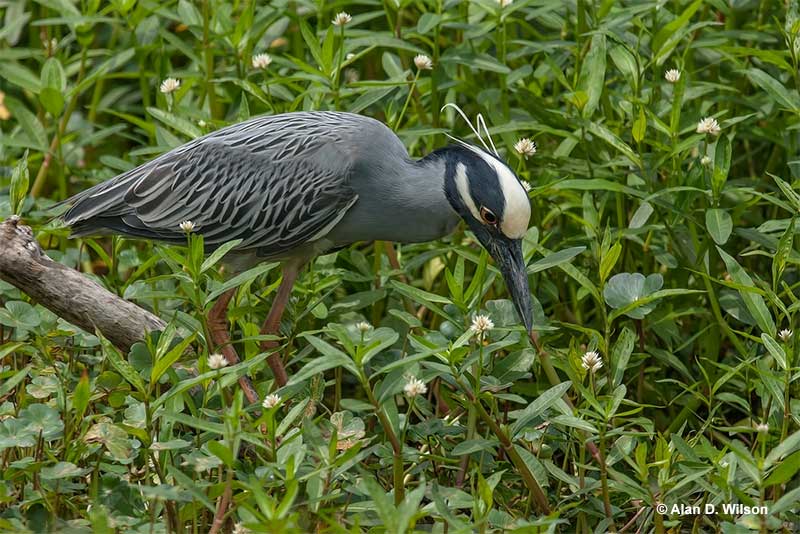
They have a white or buffy-white crown, narrow black mask, white cheek patch, and a black throat.
This species also has a few long white plumes on the back of its head. The male’s plumes are longer, especially in the breeding season.
Young Yellow-crowned Night Herons look very different. They are heavily streaked, grayish-brown birds with white spotting in their wings. Adults and young birds have longish, yellowish-green legs, large, ruby-red eyes, short tails, and long broad wings.
This heron flies with deep flaps but spends most of its time wading in or near shallow water. It also has a distinctive, abrupt, harsh squawking call, “krawk.” It usually gives this call while flying over or near a marsh at night.
Food
The Yellow-crowned Night Heron mostly feeds on crustaceans, especially crabs. In coastal habitats it eats Mangrove Crabs, Ghost Crabs, Blue Crabs, and various other crab species. Yellow-crowned Night Herons that live in freshwater swamps and other inland wetlands feast on crayfish.
Although this heron species more or less specializes on crabs and crayfish, it also eats some other small animals. It can catch earthworms, small fish, small rodents, and young birds among other small prey items.
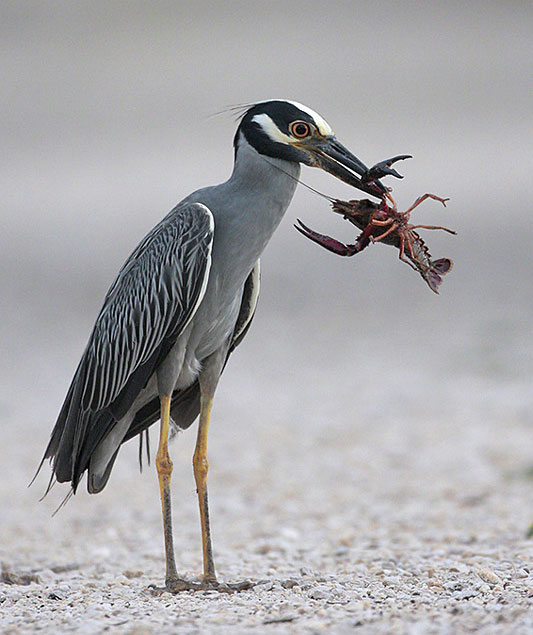
This stocky heron catches crabs and other animals by standing in place or wading at the edge of a wetland and carefully watching until it sees potential prey. After spotting a crab or other small creature, the heron slowly stalks towards it. When the bird gets close enough, it quickly stabs out to catch the animal with its beak.
If the animal is small enough, the Yellow-crowned Night Heron swallows it whole. However, if it catches a big crab or crayfish, the bird shakes the crustacean to remove its pincers and legs.
It can also use its beak to stab directly into the shell of crustaceans and occasionally catches eels. This species can forage at any time of the day but seems to be most active at dusk, in the night, and right at dawn.
Nesting and Eggs
The Yellow-crowned Night Heron usually nests in spring but, in tropical places, can nest at any time of the year. In coastal areas, it coincides nesting with crab abundance, usually from March to May.
This heron mostly nests in small colonies but in some swamps, colonies can number a hundred or even a thousand pairs. They usually build nests 20 to 30 feet high in big pines, oaks, mangroves, or other large trees in and near water. However, in some places, these herons also make nests on cliffs and big cacti.
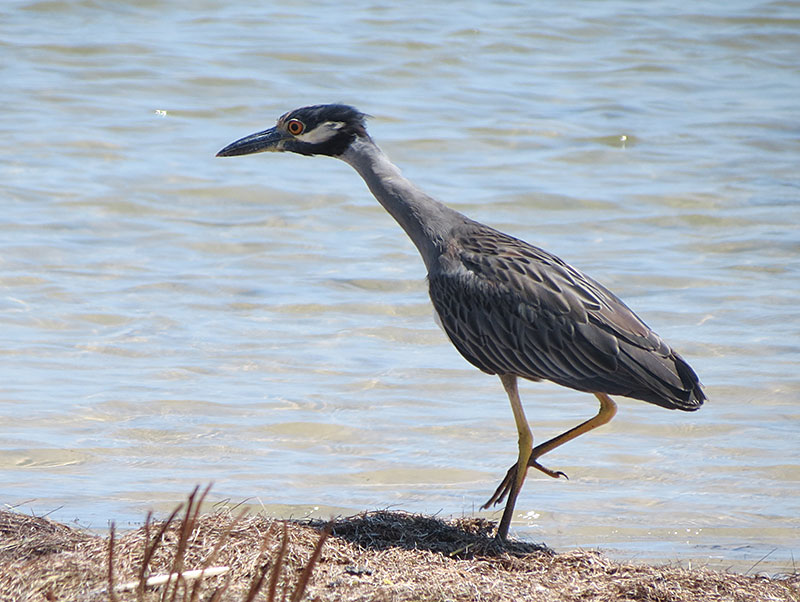
Yellow-crowned-Night-Heron
Both parents build a loose platform nest out of dead sticks and can line it with moss, twigs, flowers, or other soft materials. Although nests can be fairly small, in subsequent years, reused nests can grow to become bulky structures.
Male and female birds incubate two to five blue-green eggs for 24 to 25 days. Their eggs are two inches long and weigh 1.25 ounces.
The young birds are fed by both parents and stay in the nest until they get too big for it. After that time, they perch on nearby branches until leaving the nest 36 days after hatching.
The fledgling night herons are fed by their parents for two more weeks and stay near the nest for 20 more days.
Current Situation
Yellow-crowned Night Herons range in the eastern USA from Illinois and Indiana, south to Texas. They also live in coastal habitats from southern Maine to Florida, the Caribbean, Mexico, and Central and South America. We find this heron in a variety of wetlands, including heavily shaded, forested swamps, coastal marshes, and along other types of waterways.
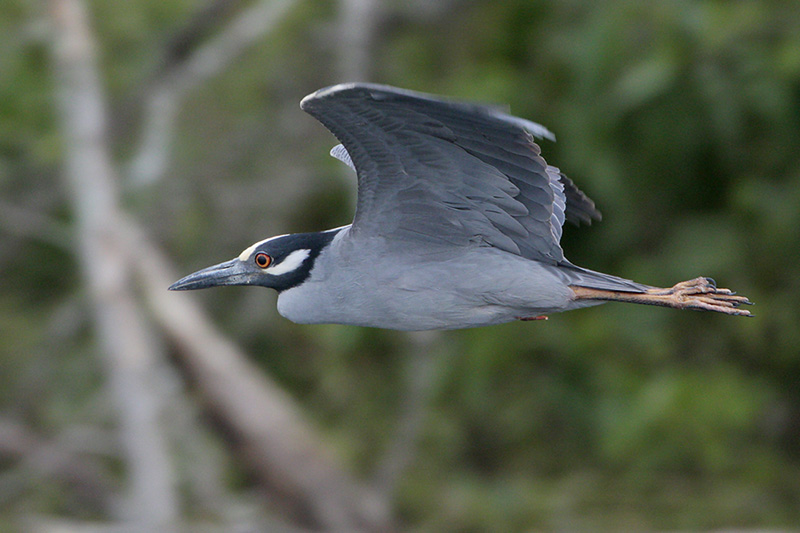
Yellow-crowned-Night-Heron
This species is listed as Least Concern in the IUCN Red List. However, in Indiana, the Yellow-crowned Night Heron is considered to be Endangered, and is a threatened species or species of concern in some other states.
Although in many places, the Yellow-crowned Night Heron is a common bird, inland populations in some regions are in trouble.
These small populations are mostly threatened by the draining of wetlands and other types of habitat destruction. There have also been conflicts with people who don’t want their colonies around their homes, especially in Virginia.
Facts
- This species often wanders to areas a bit north of its usual range. These may be birds looking for new, suitable breeding areas that have an abundance of crayfish.
- In coastal areas, Yellow-crowned Night Herons usually time their foraging with the tides. They catch more crabs and other prey three hours before and three hours after high tide.
- In some places, Yellow-crowned Night Herons are called “Crab Eaters”. This is a suitable name for a species that is very much adapted to eating crabs and other crustaceans. Unlike many other herons, it has a thick, strong beak that can crush the hard shells of crabs.
- A closely related species used to live on Bermuda but became extinct after people arrived. It was similar to the Yellow-crowned Night Heron but had an even heavier beak and larger head.
- Yellow-crowned Night Herons eat crabs and crayfish whole but don’t digest the shells. Instead, they cough up pellets consisting of these hard animal parts.
Similar Species
The Yellow-crowned Night Heron is a distinctive bird. Even so, it can possibly be confused with three other species, especially young birds.
Black-crowned Night Heron
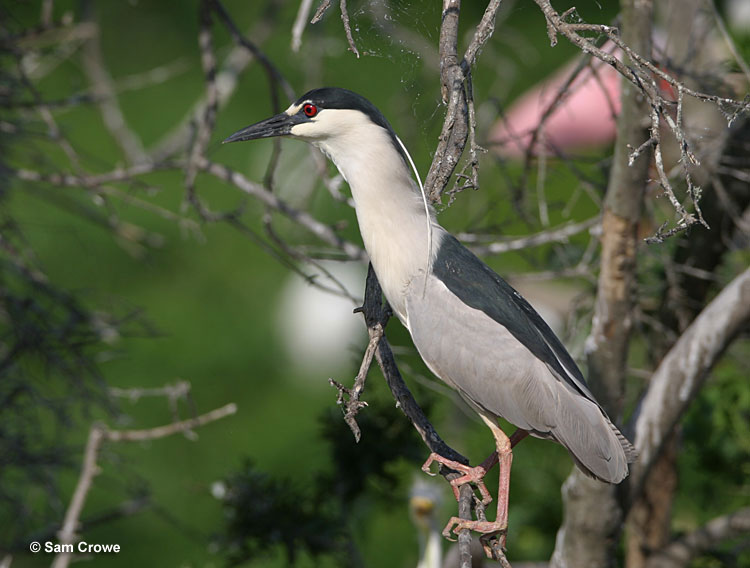
Black-crowned Night Herons are the most similar to Yellow-crowned Night Herons. Like that bird, it is also partially nocturnal, is similar in size, and has gray and black plumage.
However, the adult Black-crowned Night Heron has a black cap and back, and a thicker, stockier neck. Young birds are very similar but the juvenile Black-crowned Night Heron has a sharper, yellowish beak, larger white spots, and thicker streaks.
Green Heron
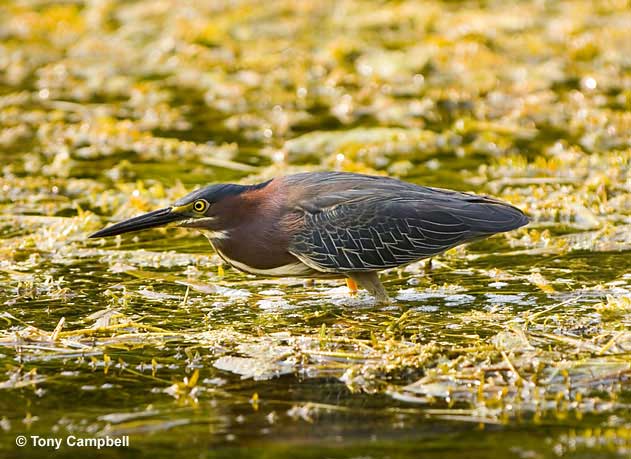
Green Heron
A young Green Heron might also be confused with a Yellow-crowned Night Heron but is much smaller, (around the size of a small crow), browner, has a narrow white line on the bottom of its face, and a sharper, more slender beak.
American Bittern
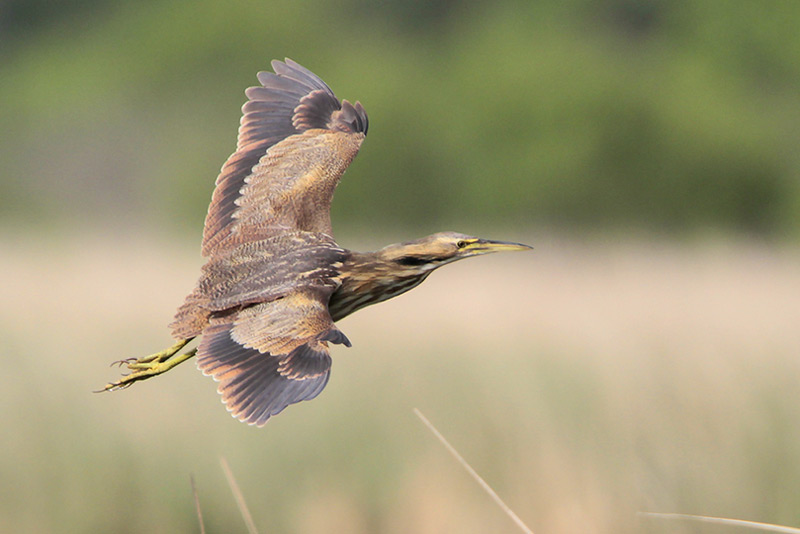
American Bitterns are another stocky heron species, but they are larger than Yellow-crowned Night Herons, have a yellowish beak, are browner, and have reddish-brown streaks on its neck.
Frequently Asked Questions
How common is the Yellow-crowned Night Heron?
The Yellow-crowned Night Heron is fairly common in many coastal areas and large swampy wetlands. It is especially common in Louisiana. However, smaller numbers occur in some parts of Illinois, Indiana, and other northern parts of its range.
Where do Yellow-crowned Night Herons live?
Yellow-crowned Night Herons live in and near wooded swamps, coastal marshes, lakes, and other types of wetlands.
Where do Yellow-crowned Night Herons nest?
Yellow-crowned Night Herons nest in large trees in and near forested swamps and other wetlands.
Do night herons only come out at night?
No, night herons can also come out in the day. However, they tend to forage more at night.

